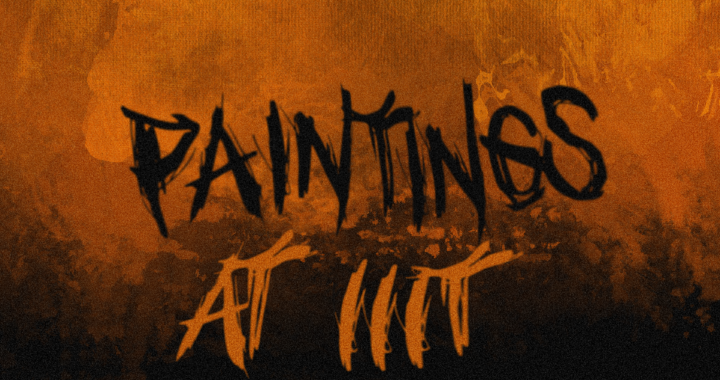A CCC Response to ‘Campus Canine Affairs’

The CCC (Campus Canine Council) was started by a group of like-minded people with support from the authorities, having a prime motive of keeping animal-human conflict in the campus to a minimum. The primary responsibilities of the CCC volunteers are to make sure the dogs are well fed daily, their injuries, if any, are attended to, all dogs are regularly vaccinated twice a year and to be neutered, if needed. Vet visits are also done as and when required.
Apart from this, the CCC also conducts sessions to help students get accustomed to the dogs on campus and make them aware of basic dog behaviour.
For example, dogs are territorial beings, so late at night or very early in the morning, when there are very few people around and a dog sees a solitary figure, there is a chance they might see it as a threat, and might bark or come running. Such an event isn’t aggressive behaviour or an attack. In such a situation, the person can simply stand and whistle or call out its name. Such incidents have happened even with CCC members and this is how they handled it.
The CCC ensures that all the dogs are neutered so that their population doesn’t grow, and overtime the number of dogs on campus decreases. But every few years, a new dog joins the campus. They usually come through holes/gaps in the campus walls. The CCC regularly reports to the authorities to fix such issues so that the dog population may remain stable.
Referring now to the dog incidents mentioned in the mail and earlier article, this is in response to the incident mentioned in the mail where a dog in Juice Canteen (JC) is known to be biting people. Firstly it is not biting, secondly the dog in question is very young and is going through what is called teething. It happens even to babies. The dog is extremely playful and friendly, and expresses it through pulling clothes or, slippers. The CCC agrees it’s not a desirable behaviour and students shouldn’t be getting their stuff torn, but it’s a long term behaviour and it can be curbed by tapping on the dog’s nose or head, or scolding back and letting it know that you don’t appreciate it. The CCC faced a similar issue with the dog in the beginning and by giving negative reinforcement to this behaviour they were able to bring it down significantly.
All of these incidents mentioned aren’t aggressive in nature and could have been avoided by simply understanding basic dog behaviour. The CCC has always urged the students who have fear of dogs and/or who are uncomfortable around them to come for the CCC induction sessions so that they don’t have to go through such experiences. The CCC has had volunteers who were not only dog lovers but also who were “anti-dog”, or who feared them. They were able to overcome their fear during their stay in IIIT and are grateful to have done so.
Lastly, the CCC is always open to suggestions, as long as they are not illegal (relocating) and/or unethical (harming the dogs in any manner). People who write mails for the entire community should be careful about the words they use. Calling a dog mentally sick, or aggressive, or rabid without any basis is senseless at best and gaslighting at worst.

 Cleaning up the Mess?
Cleaning up the Mess?  We Are So Cooked
We Are So Cooked  Qu’ils mangent de la grenouille! (Let Them Eat Frogs!)
Qu’ils mangent de la grenouille! (Let Them Eat Frogs!)  Tale of Two Cheenties
Tale of Two Cheenties  Peace of mind.
Peace of mind.  A perspective on sports in IIIT
A perspective on sports in IIIT  Paintings of IIIT
Paintings of IIIT  The Tale of Jagruti
The Tale of Jagruti
Several comments:
1. This is absolute nonsense. Let’s start with the simple stuff: look up the meaning of gaslighting please before you use it. The dictionary says: “manipulate (someone) using psychological methods into questioning their own sanity or powers of reasoning.” How do you gaslight a dog, pray tell me? In fact, ironically, you have gaslit all victims in this article as I detail below.
2. “For example, dogs are territorial beings, so late at night or very early in the morning, when there are very few people around and a dog sees a solitary figure, there is a chance they might see it as a threat, and might bark or come running. Such an event isn’t aggressive behaviour or an attack” — So they are territorial as you admit, but then they come running and barking but that is not an act of aggression or attack?! So what does it mean to be “territorial”? Now don’t tell me that the dog is running so that they can hold a peaceful dialogue with the human. The CCC seems capable of making even that argument.
3. “But every few years, a new dog joins the campus. They usually come through holes/gaps in the campus walls. The CCC regularly reports to the authorities to fix such issues so that the dog population may remain stable.” Where exactly are these reports? Does anyone make them available to the community at large at IIITH? How many new dogs on average enter the campus every year? When can we expect the dog population on campus to enter single digits for example?
4. “a dog in Juice Canteen (JC) is known to be biting people. Firstly it is not biting, secondly the dog in question is very young and is going through what is called teething. It happens even to babies. The dog is extremely playful and friendly, and expresses it through pulling clothes or, slippers. The CCC agrees it’s not a desirable behaviour and students shouldn’t be getting their stuff torn, but it’s a long term behaviour and it can be curbed by tapping on the dog’s nose or head, or scolding back and letting it know that you don’t appreciate it.” — does any opinion article pass the bar at Ping? Babies don’t go around biting people. You’re asking everyone to tap a “teething” dog’s nose? Scolding? So you’re assuming everyone is capable of this? Should we assume every dog that bares its teeth at us is also teething and that the same approach will work? Are you assuming that the kids of faculty (or their elderly parents) can go around campus freely and when they encounter a dog or a pack of dogs, all of these approaches are foolproof and that everybody is equally capable of implementing all these “solutions” you’ve come up with? Again, look up gaslighting, that is exactly what this article does to the rest of us.
5. “All of these incidents mentioned aren’t aggressive in nature and could have been avoided by simply understanding basic dog behaviour. ” — and here we are, a canonical example of gaslighting! The victims got chased and bitten, because they didn’t understand dog behavior! Now God forbid if it’s a child (like in the recent Hyderabad incident), if something were to happen to a child or just someone who isn’t capable (due to whatever reason) to understand this so-called dog psychology, we should still do nothing and move on because it is still the victims’ fault for not studying dog psychology?!
6. “Lastly, the CCC is always open to suggestions, as long as they are not illegal (relocating) and/or unethical (harming the dogs in any manner). People who write mails for the entire community should be careful about the words they use. Calling a dog mentally sick, or aggressive, or rabid without any basis is senseless at best and gaslighting at worst.” — I think we’ve established fairly clearly who is gaslighting whom. The CCC is certainly not open to suggestions if this article is the kind of response they give to students who complain about getting bitten or chased during some hours by these packs of dogs. So I think it is time campus residents and the community at large started looking elsewhere for solutions. Dialogue with the CCC has not worked and this opinion article is very good proof of that.
– Vishnu Sreekumar
Assistant Professor, Cogsci Lab, IIITH.
I had posted this response earlier and found it deleted. Reposting it now. If Ping is removing comments, then I will be discussing this on the institute email lists.
The comment was auto-flagged. We apologise for the confusion; we have restored it now.
No member of the Ping! team alters comments made by the public. We appreciate the value of free discourse and debate and, by policy, do not restrict it in any way.